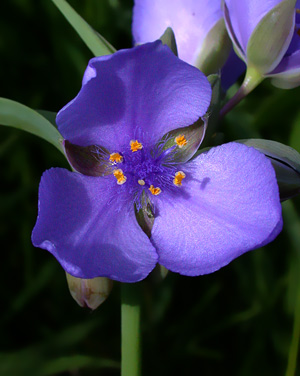Sunday, June 15, 2008
Closer to Home
Spiderwort is one of my favorite wildflowers and was found in bloom this weekend at Governor Nelson State Park. The weekend's activities were shared with friends and family; everything from cuckoos to Shakespeare. Mike McDowell's life outside of spring and fall migration is pretty ordinary, as pumping up the almighty list is no longer a concern. With gasoline at $4.00 a gallon, places a few miles from home provide as much raw nature as anyone could ever hope to master. Liberate yourself from the slavery of the list! There's something to be said for being ordinarily idle and absorbing the antics and behavioral nuances of Bobolinks and Sedge Wrens, or whatever birds are nearest to you.
Hooked by an intriguing prologue, I've been enjoying Jonathan Rosen's book, The Life of the Skies – Birding at the End of Nature. He writes, “That's the way it is with birds; they represent life, but they're always dying.” Rosen's words are so true and like him, I remember a more innocent time as a budding beholder of birds when I wasn't aware just how dire the situation is for many bird species. The longer you're at this, though, the more you realize there's a very strong likelihood that certain bird species in North America may become extinct within our own lifetimes. Like the proverbial canary in the coal mine, eventually a lot more will be lost than birds.
Sylvia and I were discussing this over coffee last week. Though she's felt a lot of despair lately, she still finds sources of inspiration to renew her hope – I admire her for that. Usually, the worse things get, it seems easier to justify a more selfish approach when it comes to our excursions to visit nature – quantity displacing quality, assuming the latter was ever present. The chase and the list are nonessential addictions. Though asking birders to limit their trips will barely dent the fuel problems we face, it certainly would be nice to have that $4.00 spent on each gallon of gasoline going to conservation instead.
Link: Birding and Conservation from 10,000 Birds
© 2008 Mike McDowell


















